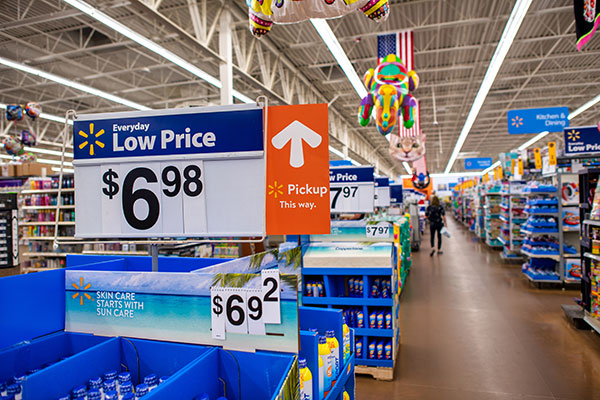
Big retailers typically employ one of two primary pricing strategies. Stores like Walmart and H&M use what’s known as Everyday Low Price (EDLP), offering products at consistent prices with few temporary discounts, while retailers like Macy’s and Wayfair use High-Low Pricing (Hi-Lo), selling products at higher regular prices but with frequent and often substantial discounts.
A new study by Chris Hydock, assistant professor of marketing at the Freeman School, investigates those strategies, finding that consumers’ preferences for EDLP versus Hi-Lo retailers depends in large part on whether the consumer is more focused on taste or quality when shopping.
“When consumers assess the value of a product or offering, some think about it in terms of how many personal taste attributes they’re getting for the price and others think about it in terms of how much quality they’re getting for the price,” explains Hydock, who coauthored the study with Luc Wathieu. “Our study shows that consumers who think in terms of taste benefits prefer EDLP retailers whereas customers who think in terms of quality benefits prefer Hi-Lo retailers.”
Taste benefits are largely subjective, reflecting personal preferences, while quality benefits are more objective and based on commonly shared preferences. In the mobile phone category, color and phone size are examples of taste benefits, whereas processor speed and storage are examples of quality benefits.
For the study, Hydock and Wathieu set up a series of experiments that asked participants to simulate various shopping tasks. With each experiment, they manipulated whether the participants were focused on taste benefits — that is, focused on getting the specific styles they like at a good price — or quality benefits — getting the best price-to-quality ratio. The authors found that taste-focused shoppers perceived better value at EDLP retailers with consistent prices and fewer discounts while quality-focused shoppers saw more value at Hi-Lo retailers that offered frequent discounts.
The experimental findings were further supported by Nielsen consumer panel data. In an analysis of more than 160 million grocery purchases between 2015 and 2019, the authors found that shoppers who used discounts to get lower prices on preferred items — signaling a taste focus — spent more at EDLP retailers. Shoppers who used discounts more often on new items — signaling a quality focus — spent more at Hi-Lo retailers.
The reason for the difference, Hydock says, is the shopper’s perception of value. While price is one factor that influences perception of value, Hydock says the shopper’s benefit focus may be an even bigger driver.
“Because these consumers think about value in different ways, that impacts their perception of these pricing strategies,” he says. “Taste-focused consumers view EDLP retailers as a safe way to get the exact attributes they’re looking for without the risk of paying a high non-discount price at a Hi-Lo retailer. Quality-oriented consumers, on the other hand, see the frequent discounts that Hi-Lo retailers offer as a great opportunity to optimize the amount of quality they’re getting for the price.”
Hydock says the study offers a number of practical insights for retailers and marketing professionals.
“I think retailers should strive for consistency in terms of product assortment and pricing strategy,” he says. “For companies that adopt EDLP pricing, offering consumers products for a wide range of tastes — different colors, sizes, flavors and styles — is going to be really important because it’s those taste-focused customers that are coming to you, whereas for Hi-Lo retailers, there might be opportunities in terms of not being as comprehensive in the taste attributes that are represented in their product assortment. For both types of retailers, their messaging should go beyond price to focus on fulfillment of specific taste or quality benefits.”
Hydock’s study, “Not Just About Price: How Benefit Focus Determines Consumers’ Retailer Pricing Strategy Preference,” is forthcoming in the Journal of Consumer Research.

